Wonder
Majlis al Jinn
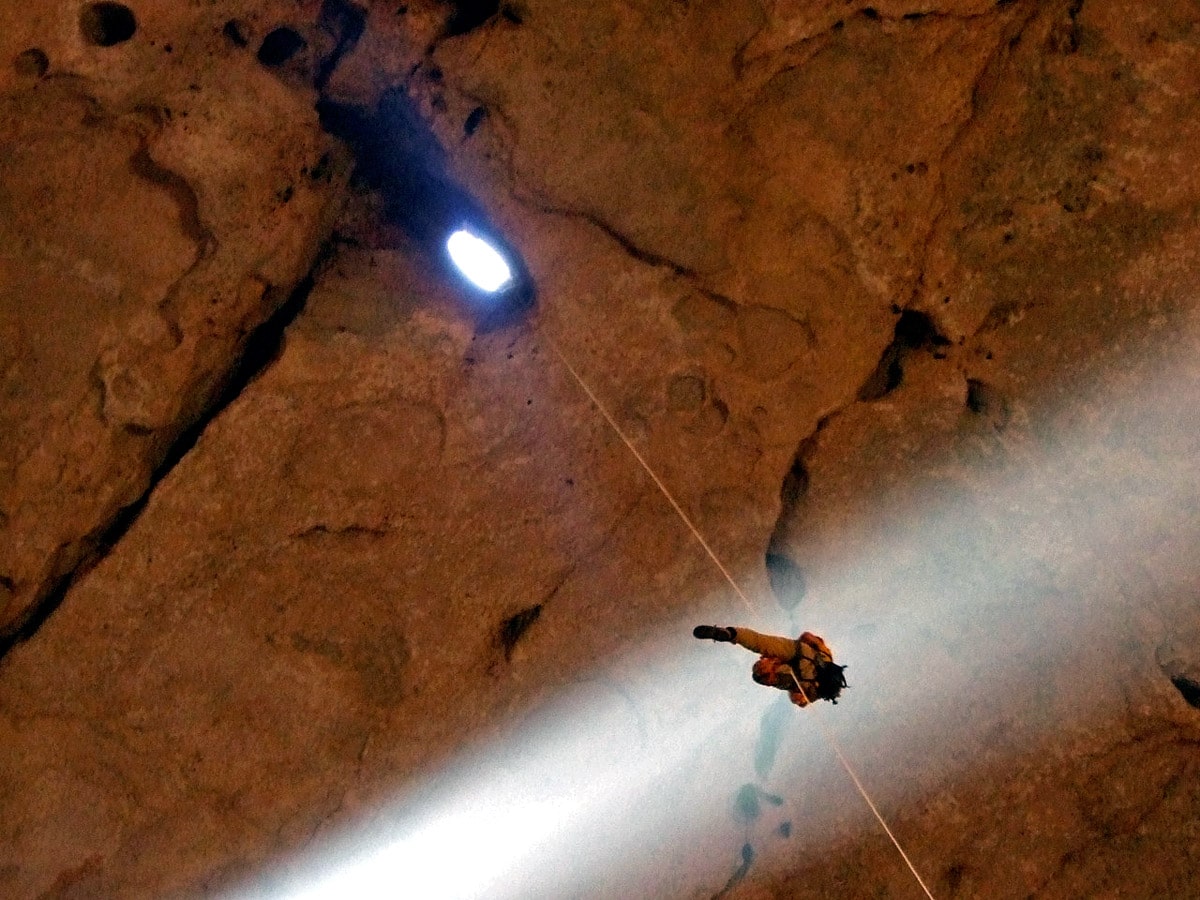
 In short
In short
One of natural wonders of Oman is the giant underground chamber – Majlis al Jinn or Khoshilat Maqandeli. This cave represents a sinkhole in early stage of development – giant underground chamber with a small opening above it.
 47.3%
47.3%
GPS coordinates
Location, address
Alternate names
Depth of sinkhole
Map of the site
If you see this after your page is loaded completely, leafletJS files are missing.
 In detail
In detail
Newly discovered wonders of Oman
Comparatively recently, over the last decades in Oman have been found diverse exciting caves and sinkholes. Some of these caves are special due to beautiful speleothems (like stalactites and stalagmites), some have unique animals not met anywhere else on Earth – like the small fish Garra dunsirei Banister, 1987 living only in Tawi Atair sinkhole. Some caves and sinkholes have immense size, far exceeding the size of any columnless room built by man.
The largest known cave chamber in Oman is Majlis al Jinn.
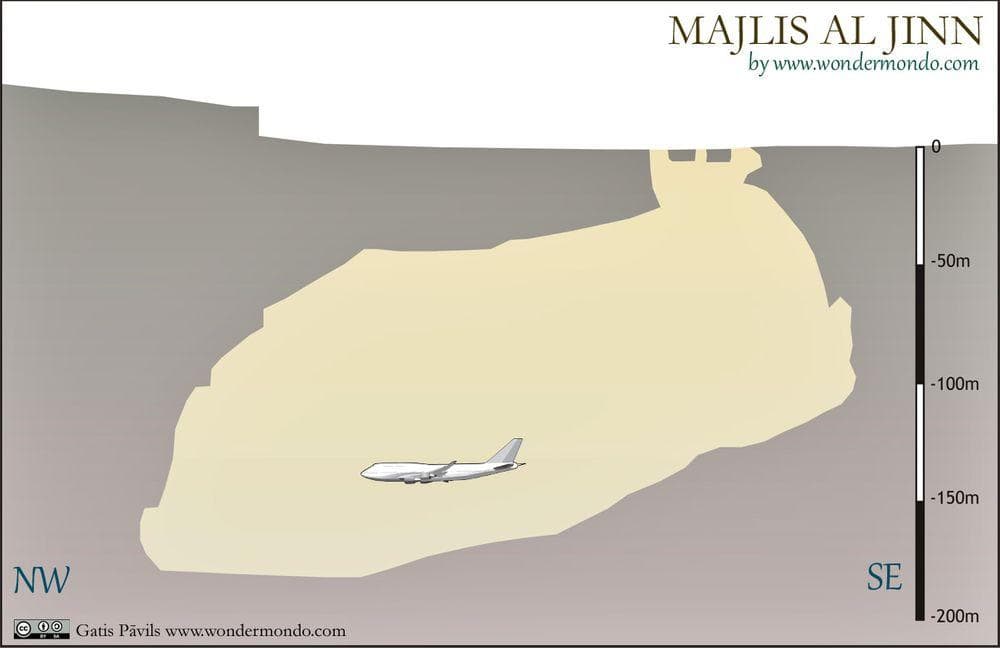
Description of cave
Majlis al Jinn represents a single, giant chamber with three holes in the ceiling. The surface of the Selma Plateau here is 1,390 m above sea level. The cave room starts some 40 meters below this surface – there are even some buildings above this void. The floor area of this chamber is 58,000 m², length – 340 m, width – 228 m. Volume exceeds 4 million m³. The ceiling is up to 120 m high – like 30 – 35 floors tall building.
Cave room is dome-shaped – the best-suited form for an enormous void.
Temperature inside the cave is cool – maximum 17 – 18 °C.
Three entrances
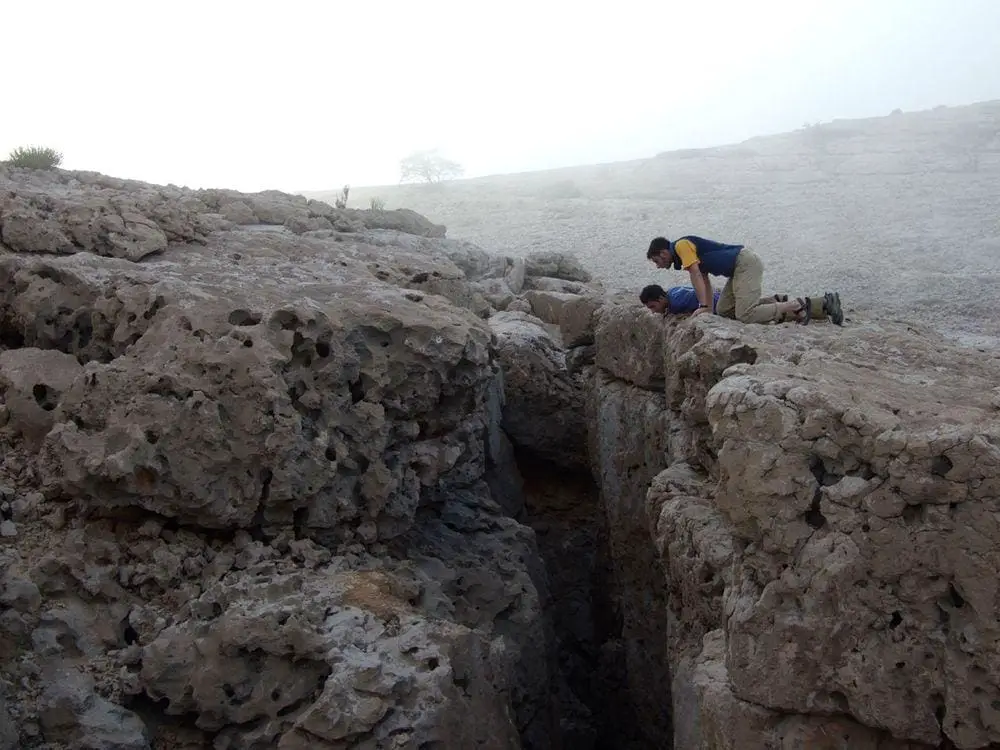
Cave has three entrances in the ceiling, each with its own name:
- Khoshilat Maqandeli (First Drop) – 118.0 m deep.
- Khoshilat Beya Al Hiyool (The Asterisk) – star-shaped entrance through widened trenches in the ceiling of the cave. 139.6 m deep.
- Khoshilat Minqod (Cheryl’s Drop) – the smallest entrance, only 2 m wide, descends close to the centre of cave chamber. This is the most often used entrance into the cave. The descent here is the highest – 158.2 m. Named after Cheryl Jones, wife of the discoverer of cave Don Davison. Cheryl was the first explorer using this entrance.
These entrances formed at locations where in the ceiling of cave meet several fractures. Initially, these were just narrow seeps, but as the rainwater continued to dissolve the limestone along the fissures, the ceiling became thin and rocks collapsed, forming larger holes.
Below each of these entrance shafts there are giant heaps of debris. This debris contains bones and corpses of unlucky goats and many other animals who have been careless enough to fall in these incredibly deep holes.
Geological history
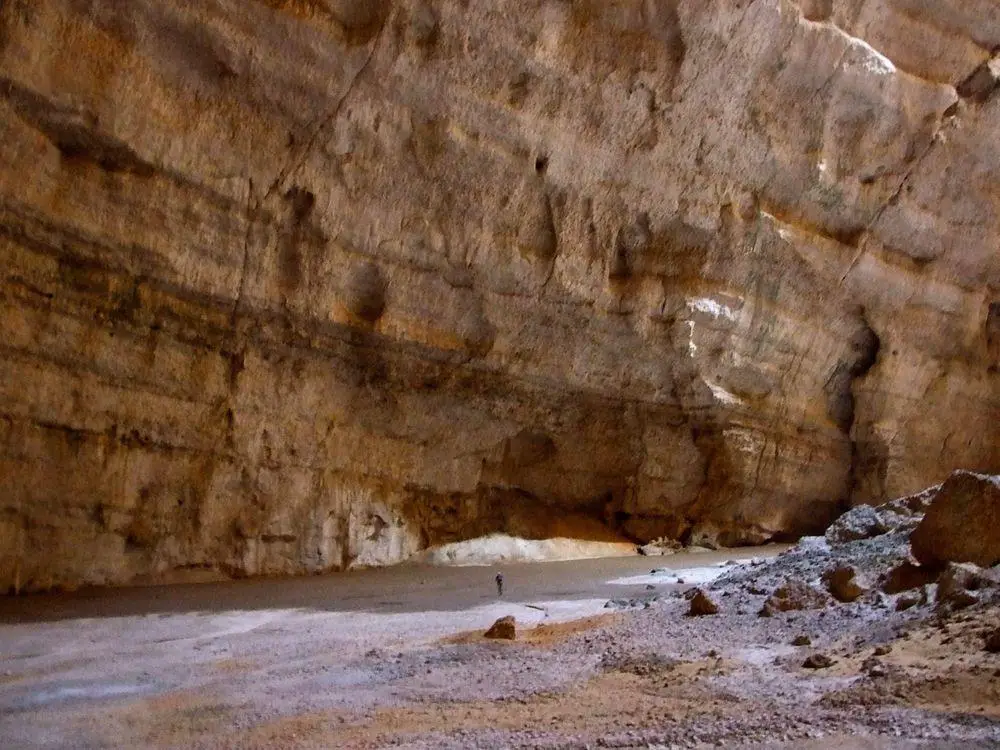
Material of the cave (but not the cave itself) formed in Middle Eocene, 40 – 50 million years ago, in a warm sea. This limestone of the Dammam Formation is rich with fossils of sea animals who lived in this time – nummulites, gastropods, bivalves, corals, echinoids.
Several million years ago these deposits were raised above sea level. As the climate back then was humid, here started active karst processes.
Majlis al Jinn was formed by hypogenic processes – by groundwater, which dissolved the limestone, gradually creating an enormous void. This means that in the past groundwater level here was much higher and the flow of groundwater – intense.
Ceiling of this cave is formed of a limestone layer with somewhat more clay. This rock – marl – has been more resistant to karst processes.
As a result here has formed an “almost sinkhole” – a giant void with several small holes in the ceiling. At some moment in the future ceiling will collapse and here will form a giant sinkhole – but by far not the largest in the world.
It is somewhat mysterious how such a large cave (and even 11.5 km long cave system nearby) formed in Selma Plateau. This plateau is too small (20 km²) to collect a large amount of rainwater for the creation of intense groundwater flows. Some specialists consider that this cave may be formed even several million years ago when local geology was different and intense groundwater flows were possible.
Last humid period in Oman peaked some 7,000 years ago and since then Oman gradually turned into a dry country and cave formation processes became much slower.
Blocked outlets
Northern part of the cave floor is a plain clay field. After heavier rain, it turns into a lake. As the water evaporates, there remains mudflat, which is wet for a long time. Clayfield to large extent is formed by fine dust blown in by desert winds. These particles are everywhere else too – movements in the cave create clouds of dust.
Existence of this perennial cave lake testifies that nowadays there is no outlet from this cave. In a rainier climate and at higher groundwater levels this cave would be filled with water.
In earlier times there existed cave passages that served as outlets but later they have been blocked by debris on the cave floor.
Not far from Majlis al Jinn, on the same Selma Plateau, there are four more entrance shafts into other caves. They unite into one enormous cave with a total length of passages of 11.5 km and a maximum depth of 385 m. It is possible that in earlier times Majlis al Jinn also was connected to this cave system.
Scarce cave formations
The ceiling of this cave is not adorned with stalagmites. At the time of cave formation, they most likely existed, but this was long ago. Since then these formations have fallen and now the climate is too dry to form them again.
Some ledges are adorned with smaller stalactites. On the cave floor, there are thousands of rather rough cave pearls.
In one spot the cave floor is adorned with numerous high stalagmites – above this spot, there are fractures in the ceiling. Rainwater is seeping through these fractures, dissolving the limestone. This limestone then remains on the cave floor as the water of drops evaporates. Somewhere in the future here in the ceiling will form another hole – entrance in this cave.
Stay in this cave is not completely safe – from time to time there fall bigger and smaller pieces of limestone from the ceiling.
Natural light
There are larger cave rooms in the world, but Majlis al Jinn is very special due to beautiful natural lighting. Light enters through the holes in the ceiling like bright beams, increasing the effect of mystery and otherworldly beauty of this unique place.
Similar effect is created in the night by moonlight – what, of course, is a very eerie and unforgettable experience.
As time goes by, light beams move. And – as the hole is high above the cave floor, this movement is unusually fast – this is an additional bizarre experience in this cave.
History of discovery and exploration
Most likely local people knew about these weird holes in the ground since ancient times. Nowadays next to the entrance lies qandilah – refuge for goats under the cliff. It serves as a mark helping to find the main entrance in the cave.
Discovery
Wider world learned about this cave only in the 1980s. Back then in Oman arrived a married pair – geologists Cheryl Jones and Don Davison, both interested in caving (then – something new for Oman). Don noticed weird holes in aerial photographs and in June 1983 (together with colleague Doug Green) reached the holes.
Later Don arrived with the necessary caving gear and descended into the cave through the First Drop. Maybe he expected that this will be just another hole – but as he descended, at one moment he reached a seemingly immense underground void. What was even more surprising was the natural light lighting this giant void.
Further mapping of the cave was performed by Cheryl Jones and Don Davison in April – May 1985.
Name of the cave
Cheryl and Don do not belong to explorers who name their discoveries after themselves and their beloved pets. They asked for the name of this cave to local people but there was not mentioned any specific name.
Thus it was decided to invent a locally adapted name. Local people believe that in caves live spirits – jinns. The newly discovered cave was that large, that it easily could be suited for large gatherings of such spirits. Thus the cave got a romantic and mysterious name – Majlis al Jinn – “the meeting room for spirits”. It goes well with the feelings inside this spooky underground world.
Later though there has been reported the local name of the cave: Khoshilat Maqandeli. It stems from the refuge for goats nearby. Thus locals name it Khoshilat Maqandeli but internationally this cave is known as Majlis al Jinn.
One of the largest cave rooms in the world
At the moment of discovery Majlis al Jinn was the second largest cave room in the world by floor surface area.
Since then there have been discovered many more large cave rooms and now there are known at least eight cave rooms in Malaysia, China, Laos, Mexico, Spain, and Romania which are larger than Majlis al Jinn by surface area. Even more cave rooms exceed Majlis al Jinn by volume.
But the tourism industry is stubborn – countless brochures and Websites still claim that the cave is the second largest in the world.
Tourism development
At the moment of discovery the cave was hard to access – there was required time to walk and climb until it was reached. With all the climbing gear it was a strenuous task.
Now Majlis al Jinn is accessible with 4WD cars – if the weather has been suitable before this.
Government of Oman currently is developing this cave as a tourism object, and there is put much effort to organize environmentally friendly and unobtrusive tourism.
It is somewhat worrying to imagine groups of regular tourists here – but this might be good additional income for local communities.
References
- Caves of Oman. Website of Oman AAPG-SEG Student’s Group. Accessed in the 3rd August 2010
- Majlis al Jinn – meeting room of spirits – Khoshilat Maqandeli. Lilian en Jan Schreurs Homepage. (excellent source of information about Oman – highly recommended!) Accessed in the 3rd August 2010
 Linked articles
Linked articles
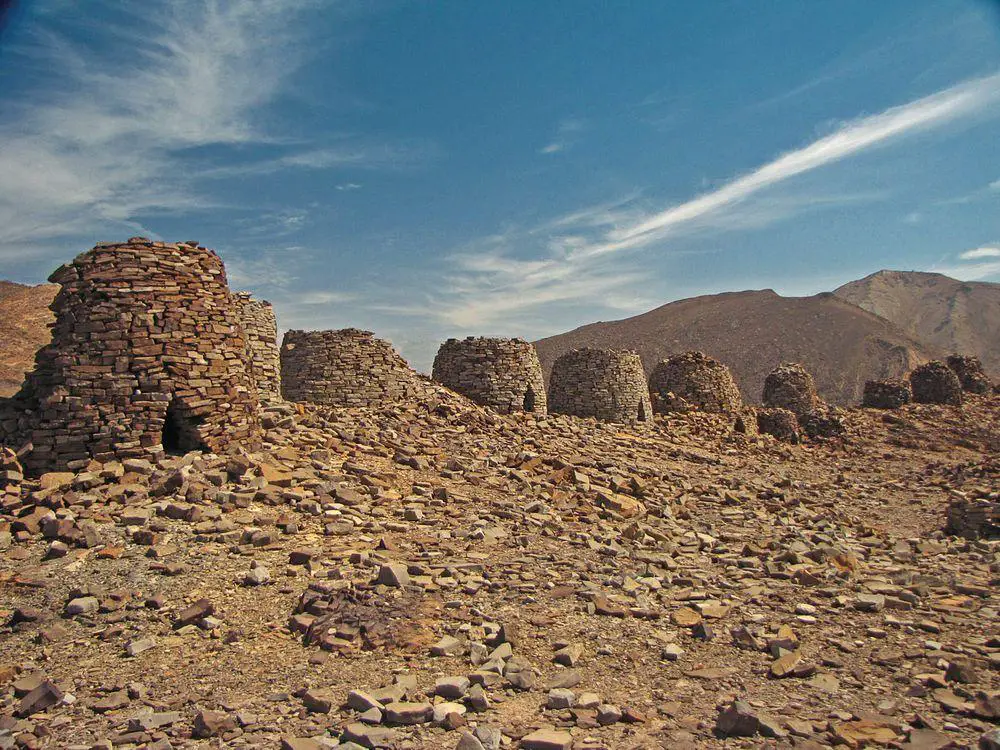
Wonders of Oman
Southern Arabia is the embodiment of fantasies about the mysterious, beautiful Arabia from One Thousand and One Nights. Oman with its breathtaking landscapes and mysterious monuments of history definitely represents a part of this realm.
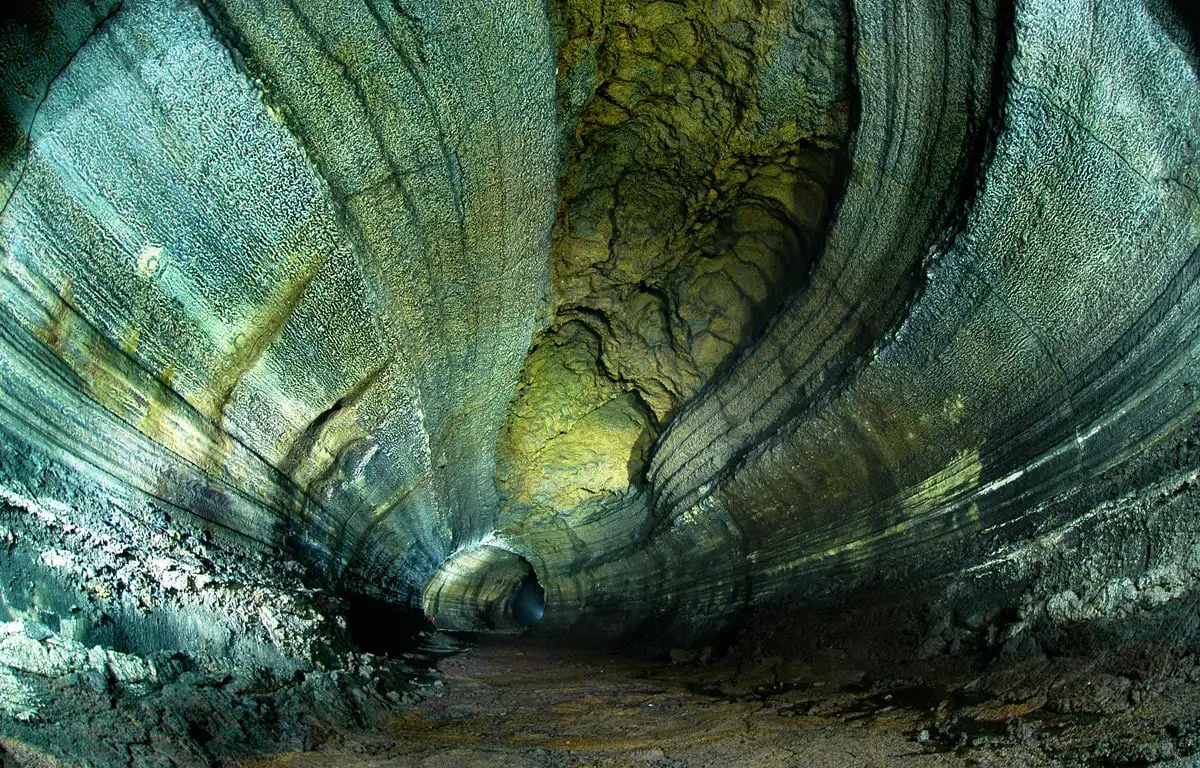
Caves
Every year there are reported exciting discoveries of new caves and discoveries of new qualities such as cave paintings in the ones known before. But there still is a feeling that our knowledge covers just a small part of all these monuments of nature.
Though, those which are known to us, offer a surprising diversity of unusual features and impressive sights.
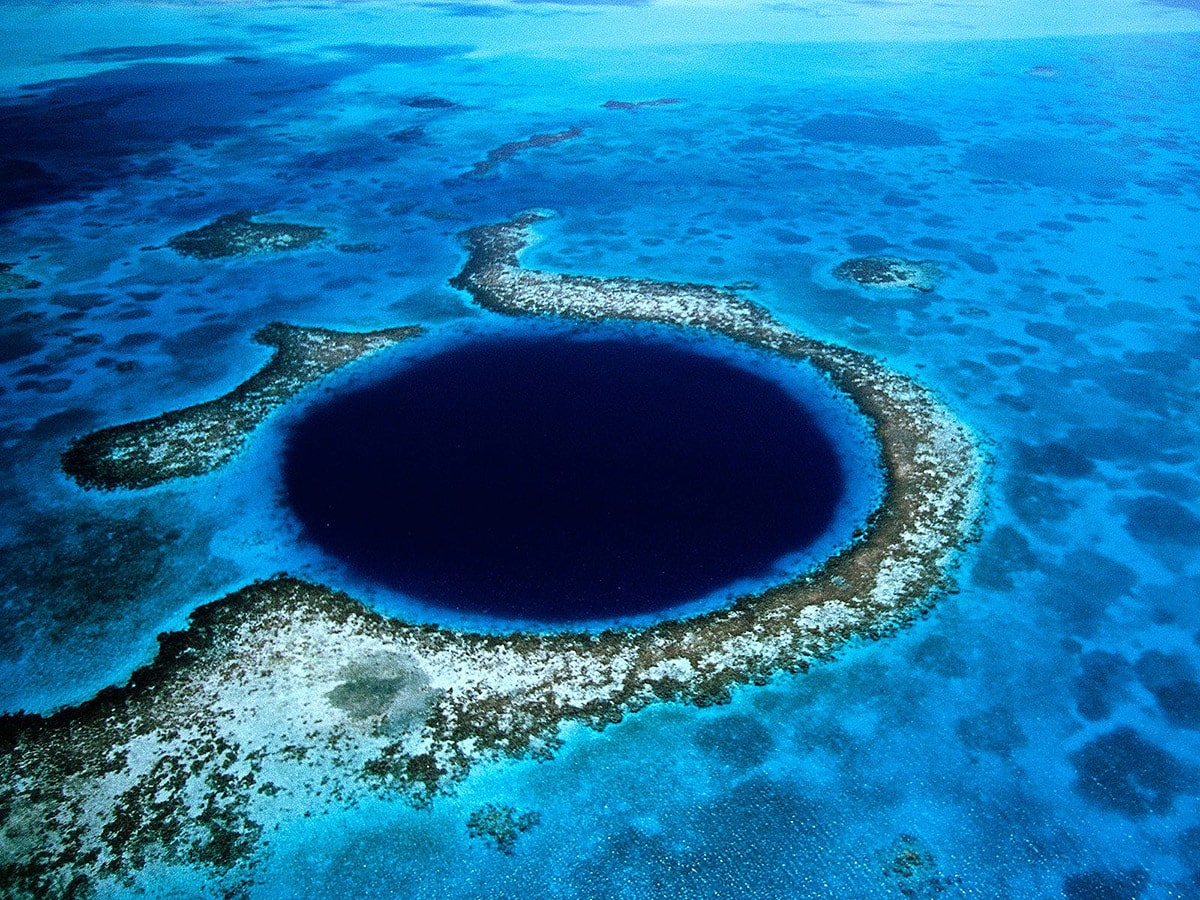
Sinkholes
This category includes outstanding sinkholes – large natural depressions or holes, which for most the part represent collapsed caves.
 Recommended books
Recommended books
Encyclopedia of Caves
Encyclopedia of Caves is a self-contained, beautifully illustrated work dedicated to caves and their unique environments. It includes more than 100 comprehensive articles from leading scholars and explorers in 15 different countries. Each entry is detailed and scientifically sound, yet accessible for students and non-scientists.
Introduction to the Caves of Oman
Caves of Oman provides important information on the geology and formation of caves. Within its 128 pages, the authors emphasize the main features of every cave, so that “Caves of Oman” can be used as a guide for visitors and explorers. Ninety maps and graphics are included in addition to 90 photographs. It also provides information on cave formation which started millennia ago through the natural process of melting and eroding.


